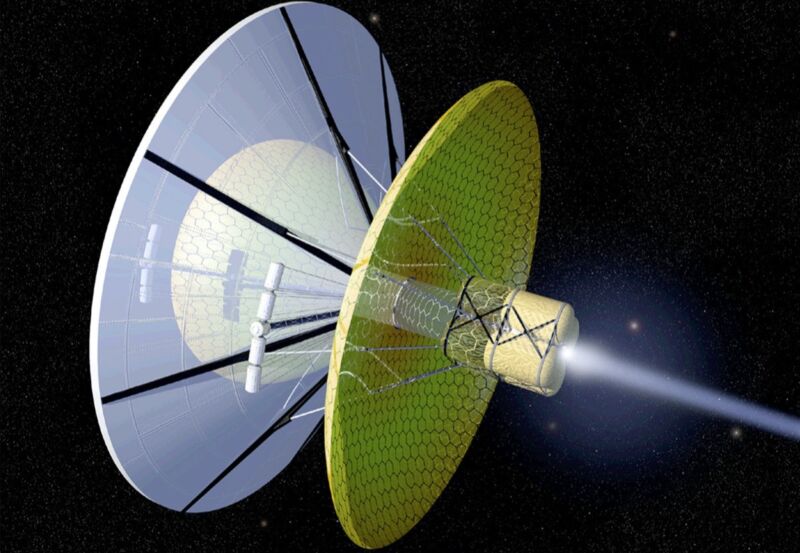
Enlarge / Artist’s impression of the Ramjet propulsion system proposed in 1960 by physicist Robert W. Bussard (credit: NASA)
In Poul Anderson’s 1970 novel Tau Zero, a starship crew seeks to travel to the star Beta Virginis in hopes of colonizing a new planet. The ship’s mode of propulsion was a so-called “Bussard ramjet,” an actual (though hypothetical) means of propulsion which had been proposed by physicist Robert W. Bussard just a decade earlier. Now, physicists have revisited this unusual mechanism for interstellar travel in a new paper published in the journal Acta Astronautica, and alas, they have found the ramjet wanting. It’s feasible from a pure physics standpoint, but the associated engineering challenges are currently insurmountable, the authors concluded.
A ramjet is basically a jet engine that “breathes” air. The best analog for the fundamental mechanism is that it exploits the engine’s forward motion to compress incoming air without the need for compressors, making ramjet engines lighter and simpler than their turbojet counterparts. A French inventor named Rene Lorin received a patent in 1913 for his concept of ramjet (aka, a flying stovepipe), although he failed to build a viable prototype. Two years later, Albert Fonó proposed a ramjet propulsion unit to increase the range of gun-launched projectiles and eventually was granted a German patent in 1932.
A basic ramjet has three components: an air intake, a combustor, and a nozzle. Hot exhaust from fuel combustion flows through the nozzle. The pressure of the combustion must be higher than the pressure at the exit of the nozzle in order to maintain a steady flow, which a ramjet engine achieves by “ramming” external air into the combustor with the forward speed of whatever vehicle is being powered by the engine. There is no need to carry oxygen on board. The downside is that ramjets can only produce thrust if the vehicle is already moving, so they require an assisted takeoff using rockets. As such, ramjets are most useful as a means of acceleration, such as for ramjet-powered missiles or for increasing the range of artillery shells.









![E3 makes months-in-advance call to skip convention hall in 2022, go “virtual” [Updated]](https://cdn.arstechnica.net/wp-content/uploads/2022/01/e3-2022-gloves-800x450.jpg)







